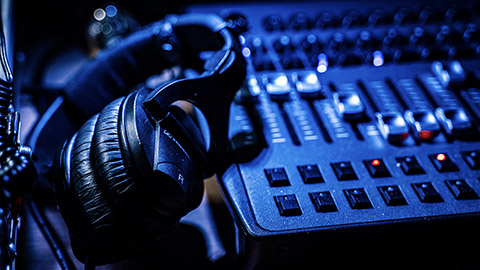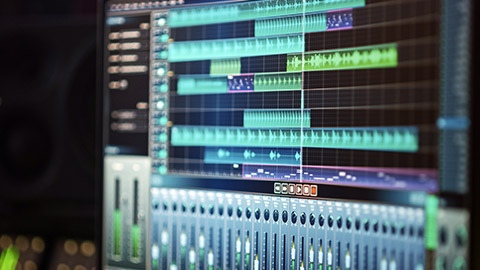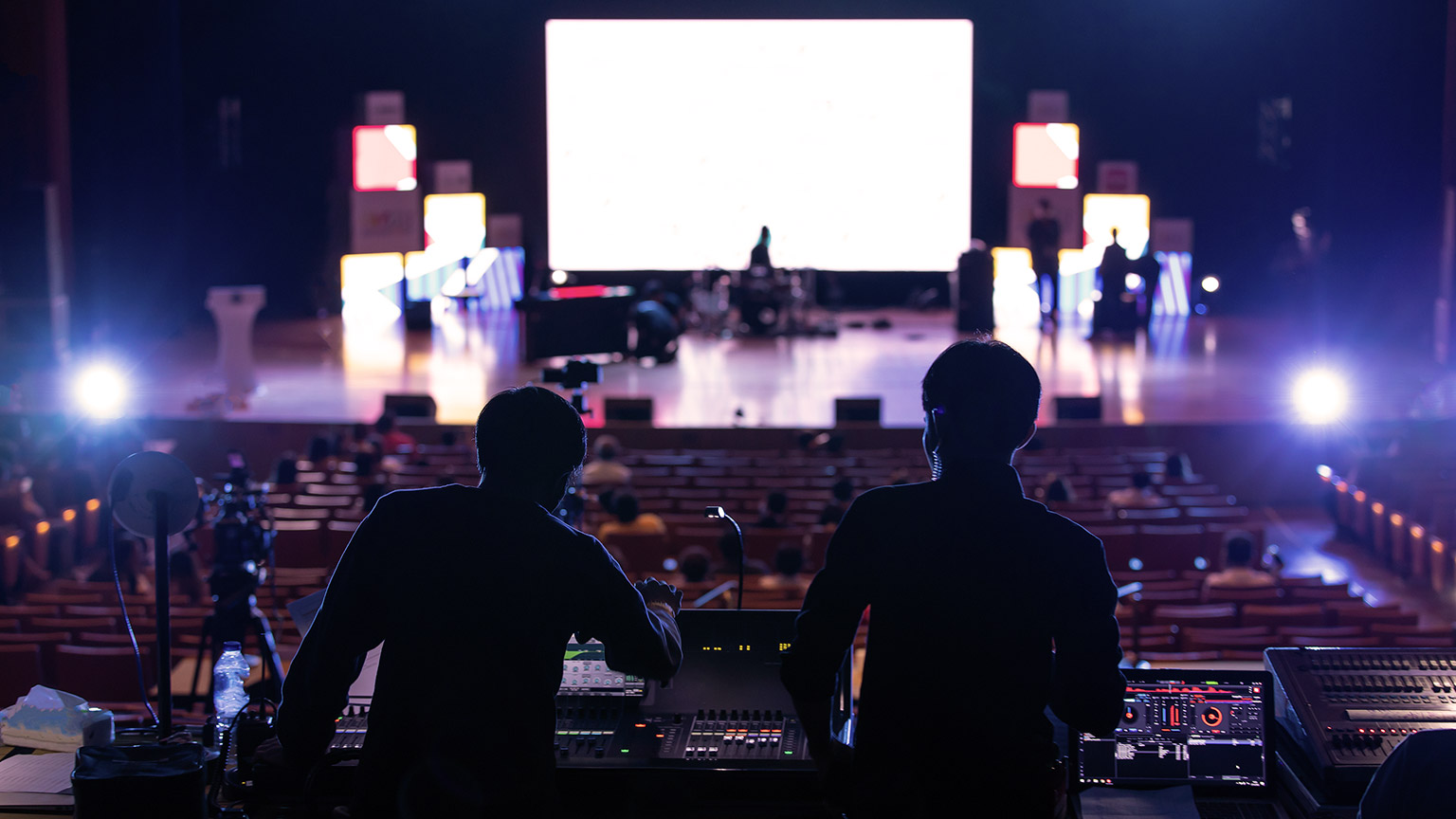If it sounds good... it is goodJoe Meek
An audio or sound engineer for live eSports production is responsible for capturing shout caster voices, game sound, players, audience and other event program audio. It is then their job to take all that sound from different sources and make them all come together for the broadcast.
Audio engineers are across all stages of the event as sound is a crucial part of every part of an eSports event.
Key Responsibilities
- Sound setup: The sound engineer is responsible for setting up and configuring audio equipment
- Audio mixing: During live events, the sound engineer is in charge of mixing audio sources to achieve a balanced and clear sound.
- Microphone management: Sound engineers handle microphone selection, placement, and configurations to capture high-quality audio from various sources.
- Audio recording: Sound engineers may be responsible for recording audio in esports events for other later purposes
- Audio during events, troubleshoot any audio-related technical issues, such as microphone malfunctions, connectivity problems, or audio disruptions.
Watch: A Day in the life of an Audio Engineer (12:08 minutes)
Watch the video below and take notes.
Sound recording devices and how they work
You will have different requirements when it comes to gear for any eSports event based on the size of the event, and whether the players will be competing online or in person. However, there is essential equipment needed to make a quality production of any size. These include but are not limited to:
- Headsets –These allow the players to hear the game audio.
- Microphones – Used by players and shoutcasters/hosts to communicate with each other or the audience.
- Speakers – Allows audience to hear in game sounds or shoutcasters/hosts.
- Audio Mixer – Handles audio feeds for people in the room and the streaming audience.
The rise of remote productions: Lets Play Live Auckland
Duane Mutu, founder/director of Lets Play Live (LPL) LetsPlay.Live - Tournaments, Ladders and Leagues for PC, PS and XBOX says they saw a ‘huge interest’ boost when it came to broadcasting remotely since the pandemic as the content could be produced entirely remotely allowing flexibly for events which is very valuable and a lot less time consuming.
As a result of this flexibility, and due to a lot of the challenges that come up with creating a live event – it’s common within eSports for production to be remote due to sound engineers being able to do everything regarding production while being remote.
Portfolio Checkpoint 2K: let's play Live
Create a free account on the Lets Play Live website: LetsPlay.Live - Tournaments, Ladders and Leagues for PC, PS and XBOX
Sign up to view some of the free online events.
What worked well and did not work well in these events?
Add your notes to your Portfolio.
Watch: Rightsizing Esports - Technical Solutions from Schools to Stadia with Cameron O'Neill - Webinar (53:55 minutes)
Watch this Webinar from 26:47 – 35 min.
Image: Harman International. (2020). Network Audio Example [Illustration]. ProHarman.Com.

Follow the screen shots to record on Microsoft Windows Stereo Mix (Just Windows)
Step 1
Go to your Computer Settings > System > Sounds > Input
Step 2
Now once you are here you are in the right place:
Step 3
We will need to create one that would be audio mix. You will notice that by default settings we do not have this option. So, what we are going to do is go back to sounds and clock on all sound devices. This allows us to record everything that is coming out of our computer:
Step 4
Once we have done that well have an option for stereo mix:
Step 5
Once we are in Stereo Mix click on General > Audio > Allow:
Step 6
Now let's go back to Sound:
Step 7
Now we scroll down to input devices and now the Stereo option should appear:
Step 8
We select it and now all sound coming out of your computer would be the input default for recordings
When it comes to the realm of music, we need to be careful when we use someone else's recordings. Music is an artistic product, and as such it is considered valuable and must not be used without the author's consent. We need to be conscious about how much effort and resources they put into their work. Therefore, there's several categories of music that we could use with different types of conditions.
- RFM-Royalty Free Music
- NCM-No Copyright Music
- SMM- Self Made Music
There are, however, some tools out there that may allow you to create your own music with your own creativity and we will always encourage you to create your own path into the music industry if that is what you feel suits your set of skills.
RFM - Royalty free music
Royalty Free Music is a type of licensing that allows use of a creator's musical content as many times as you would want with just a single purchase or in some cases for free.
CFM-Copyright free music
C-free music is commonly used as a term to describe music that is free from copyright issues.
Royalty Free Music for video creators | Epidemic Sound
SMM -Self-made music
It is our own creation. Many of us have not developed our musical skills yet, but luckily for us there are digital instruments that allow us to create soundtracks.
Portfolio Checkpoint 2L: Music Master
You do not need to be a pro-have fun creating your own music! Enter incredibox.com and try creating your own musical hook.
Go to:
Incredibox
Use the free demo version for Incredibox and create a beat that you could use for your eSports event ‘Stand by’ scene .
Take your time and be as creative as possible-there is no wrong tune. Make sure you share your creations with your team and decide which one to use!
Add it to your Portfolio and share your creations with your teammates.

The second option that we recommend for audio recording is Audacity, a free to use and open source software: https://www.audacityteam.org
Once you have downloaded the software it should look like this:
Now Select Windows WASAPI for Audio recording:
Now we have to select the input source, in this case well select the previous one we have done, Stereo Mix to record everything that is coming out of our computer:
Now the only thing left to do is to click the recording button:
Watch: How to use Audacity to Record and Edit Audio | Beginners Tutorial (38:26 minutes)
You can find more on how to use Audacity in the following video:
Portfolio Checkpoint 2M: Make a video recording
Create a 1-minute minute video with no sound in an MP4 format. Then record your voice following the previously recorded video and save the MP3. Then try to overlap the MP3 voice recording with your MP4 video so it sounds like your voice with the recorded video. It does not have to be perfect.
Add the video link to your Portfolio
Sound effects are a key component of creating an exciting and engaging eSports event. Voice changer is an audio tool which is widely utilised in eSports audio.
Watch: How to use FREE Voice Changer app on PC (8:01 minutes)
Watch the video below and take notes.
Portfolio Checkpoint 2N: Use your voice
Have a play with the voice changer, record yourself talking to someone you know online- have some fun with this!
Record your own modified voice, you should include the following in your recording:
- Make yourself sound with a higher pitch
- Make yourself sound with a lower pitch
- Make yourself sound older
- Make yourself sound like a robot
Add your voice recording to your Portfolio.
